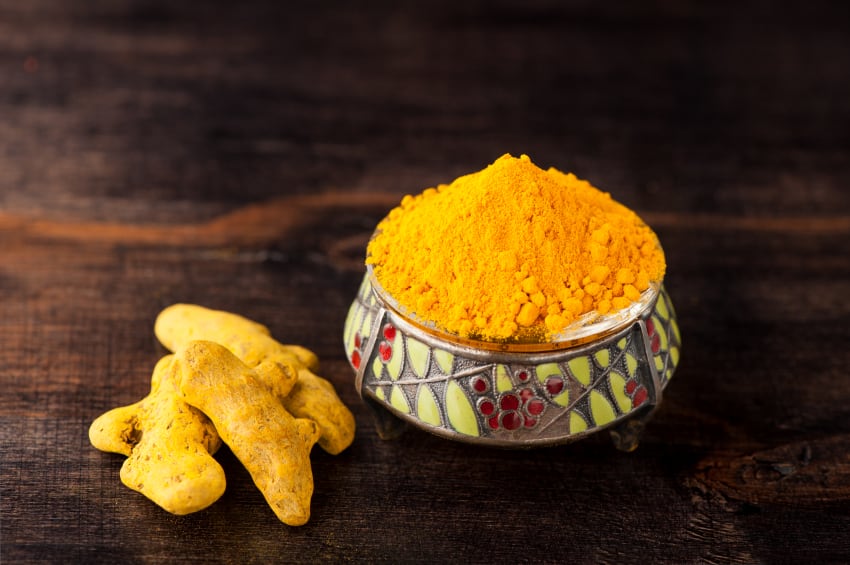There is a tendency among consumers to consider botanical supplements to be 'natural products' and therefore assume they are good. However, the use of botanical supplements requires an overall assessment of the consumer's condition and any possible interactions between the active ingredients and other drugs or supplements they may be taking.
The Advisory Board on the Quality of Botanical Supplements, which consists of ten experts from around Europe including doctors, biologists and chemists from a range of specialist fields, was therefore formed to drawn up a consensus paper to help experts to assess the quality, safety and efficacy of supplements.
Quality
In their first consensus paper, named "Food Supplements of Botanical Origin: a multidisciplinary approach to quality. The case of turmeric", the authors have clarified what 'quality' means in the case of turmeric.
It states: "The quality of turmeric, like all botanical extracts, depends primarily on the quality of the raw material and the purity of the extract.
"The procedure that enables the plant to be unquestionably identified is by DNA analysis or barcoding of the plant itself. Furthermore, quality turmeric is free from contamination whether accidental or deliberate."
It explains that the types of contaminants that may be present include: Any species other than Curcuma longa, such as Curcuma zeodaria, Curcuma aromatica and Curcuma xanthozzhiza; azo dyes such as Metanil Yellow and Sudan I and IV; organic compounds such as turmeric; or synthetic curcuminoids.
"Another area of potential contamination is during the manufacturing process of the raw material. Quality turmeric must not contain process contaminants such as polycyclic aromatic hydrocarbons or PAHs, pesticides or solvents outside the limits of acceptability, as prescribed by current regulations.
"Furthermore, it must not contain GMOs (genetically modified organisms) and must respect precise microbiological parameters. The protocols and tools to define the quality of turmeric are therefore many and consolidated.
"The conscious prescription of supplements with curcumin means demanding exhaustive and transparent information from producers on quality controls and the methods by which these controls are carried out."
Safety
Discussing the safety of turmeric supplements, the consensus paper states that the amount of research conducted since curcumin's discovery in 1815, makes this botanical ingredient one of the most studied in the world.
"Based on scientific evidence it can be stated that the safety profile of turmeric is very high. As regards liver safety, curcumin has been studied all over the world for years in dozens of experimental models as a treatment for the protection of the liver against chemical damage, caused for example by alcohol abuse.
"In case of changes to the liver function, however, use of the product is not recommended. As a general indication, it should be reiterated that botanical supplements should preferably be recommended by the doctor or pharmacist, who are able to verify the general condition of the subject, analyse any therapies or additions already in progress to evaluate possible interactions and identify the most effective dosage."
Efficacy
Like many botanically derived substances, turmeric has poor solubility in water and is difficult to absorb, therefore limitating its bioavailability.
The consensus' authors outline some of the solutions that have been found for this problem.
"One of the most common formulation solutions is the association of curcumin with piperine. Piperine is a solid substance that does not dissolve in water and is able to increase the bioavailability of some nutritional substances.
"Piperine in combination with curcumin therefore improves the activity of the latter in the body, enhancing the amount of substance dissolved in the plasma and the extent of absorption."
However, the report notes that this increase absorption is a non-selective mechanism: so it may also increase the absorption of other substances, natural or synthetic.
The authors go on to say that one of the most innovative solutions in the formulation of curcumin for helping bioabsorption is with turmeric phytosome.
"The phytosome is a formulation developed by Indena to improve the bioavailability and pharmacokinetic profile of active compounds of natural origin using 100% food grade ingredients (lecithin).
"Lecithins are natural surfactants which, together with bile salts, participate in the physiological process of absorption of lipophilic compounds and constitute the lipid double layer of cell membranes, making compounds, not readily soluble in water, more easily absorbable for example by the intestine.
"The efficacy of turmeric phytosome is demonstrated by 35 scientific studies in humans, of which at least a third were conducted with the randomised controlled scheme, relating in particular to the areas of cardiovascular, intestinal and ocular health, nutrition in sports, osteoarthritis, diabetes and the side effects of anticancer therapy."


